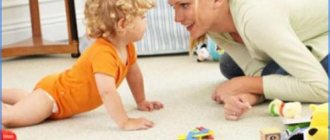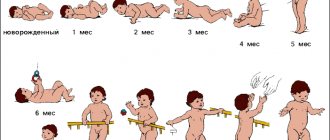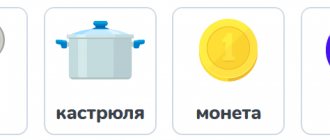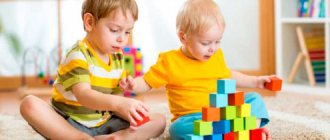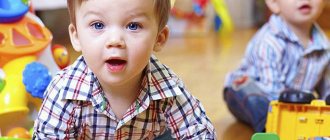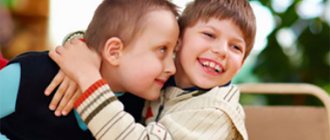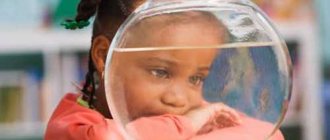Knowledge of a child at 3-4 years old
At this age, children already know a lot of words (about 2000). The child tries to speak correctly and clearly, like adults. Sometimes he doesn't do it very well. To raise the level of speech development, it is necessary to study a lot with children, communicate, play, draw and write.
Speech development in a 3-4 year old child is quite weak. However, the older children get, the larger their vocabulary. And at this age, the child knows and can do the following things.
- Says his first name, last name and patronymic.
- Knows the names of relatives and friends.
- Perceives images and describes any situation he sees.
- Speaks in simple sentences and gradually moves into more complex ones.
- Identifies objects into groups: a frying pan, a plate, a cup are dishes; a jacket, pants, a T-shirt are clothes, etc.
- Finds a sign of an object: a white window, a wooden table, a glass glass, etc.
- Knows the actions of a person or animal: an uncle is walking, a cat is sitting, a boy is running.
- Repeats what he heard.
- Retells a cartoon or fairy tale.
- He speaks not only loudly, but also quietly.
Speech development in a 3-4 year old child is special and individual. Some children know fewer words, others more. So this is not an indicator. If you practice regularly with your child, you can get good results.
Speech development of a child at 3–4 years old: norms and features, recommended exercises
Oksana Belmas
Speech development of a child at 3–4 years old: norms and features, recommended exercises
At this age, children have already learned to think logically and draw their own conclusions about the objects they became acquainted with during play activities. The main feature of the speech development of 3-4 year old children is the ability to actively communicate with people. They speak even when it is difficult for them to pronounce sentences consisting of long structures. Difficulty pronouncing words (vowels, hissing sounds)
inherent in many children of this age, and therefore are not considered a deviation from generally accepted medical
norms . However, if there is a suspicion that speech skills are impaired , then you need to consult a pediatrician or speech therapist.
Features of speech development of a 3-4 year old child
The speech development of children 3 and 4 years old goes through certain stages of communicative communication. At first, the child learns speech with his parents, and then improves his skills in a preschool institution.
In the fourth month of life, many babies pronounce monosyllabic phrases well, and even learn to construct speech from complex sentences. It happens that it is very difficult to understand a baby, since speech functions are still poorly developed . This is especially noticeable when, while pronouncing words, a three-month-old child pauses , misses prepositions, and incorrectly puts endings or accents.
Characteristic features of the speech development of most children 3-4 years old, which are the norm , are the following indicators:
Many questions appear in the active vocabulary: why? For what? What will happen?;
boys and girls try to pronounce sentences consisting of 3-4 words;
Normally, a child’s vocabulary at age 3 is about 1,500 words, and at age four – more than 2,500 words ;
the child tries to remember and logically retell the sounds he heard, rhymes, nursery rhymes, and the speech of adults.
speech at 4 years old is constantly improving and becoming more understandable. He has already mastered enough grammar, composes phrases correctly and can even answer with a connected sentence without errors. More parts of speech and compound phrases appear. When speaking, adjectives, pronouns, prepositions and conjunctions are used. The articulation and use of verbs in numbers and persons improves noticeably.
Standards for children's speech development
The development of speech in children 3-4 years old within normal presupposes a clear understanding by mom and dad of their child . However, this indicator is purely individual. According to statistics, communication skills in most boys develop later than in girls. The delay period for personal skills can reach two to three months.
A child's speech apparatus develops as he grows up. It has its own characteristics , which depend on a number of factors - social, everyday and physiological. The first includes a good atmosphere in the family (no quarrels between parents)
and daily activities with the baby.
Physiological factors include peripheral and brain mechanisms. These speech centers are located in the cerebral cortex and store “
speech patterns ” that accumulate during the learning process.
Despite individual indicators, it is necessary to take into account generally accepted norms for assessing speech development in a 3-4 year old child . Parents' interest in ensuring that the child masters speech correctly will help avoid many obstacles in the future.
At 4 years old, a child’s speech must meet certain standards . Deviations from the norm in psychological development are possible , but not significant.
It is desirable that at this age the child should be able to:
tell about yourself (say first name, last name, residential address)
;
describe the proposed picture, retell your favorite “cartoon”
or a fairy tale;
accurately repeat words and sentences heard;
speak in lower and higher tones;
pronounce most sounds, with the exception of sonorants ( "r"
,
“l”
) and hissing (
“s”
,
“sh”
,
“sch”
);
understand well what is going on.
call the actions of pets - “the cat is lying”
,
"the dog barks"
.
If you find a discrepancy on several of the above points, seek help from your pediatrician. It is possible that the baby simply lacks parental support and attention, which is an obstacle to learning skills and abilities. If more serious disorders in delayed speech development , the doctor may prescribe a comprehensive examination for the child (psychiatrist, speech therapist, neurologist)
.
How to teach a baby to speak correctly?
Even when everything is fine with a 3-year-old child, his vocabulary needs to be constantly developed . To correct a child’s it is advisable to involve a speech therapist who will select the correct teaching method, taking into account his individual characteristics . Such trainings promote logical thinking and improve articulation.
The speech development of children at three years old proceeds in a dynamic form. During this period, it is very important to be extremely careful, not to rush to complicate classes, and soon your child’s speech development problems will be left behind .
What activities should be conducted with children at home so that they quickly master such skills? Children's speech therapists give several proven methodological recommendations :
Say all actions out loud. For example, “Anya goes for a walk outside”
,
“bring a warm blouse
,” or
. ”
Make adjustments to your speech. When communicating with your child, use different methods of intonation (loudness, intensity, prolongation)
.
Use didactic materials and speech therapy aids aimed at correcting speech disorders .
Teach your child to express his thoughts through communication. Try to gesticulate less when explaining new things.
Ask your little one to expressively voice his favorite characters ( “Teddy Bear”
,
“bunny”
,
“squirrel”
, girl
“Masha”
from the cartoon).
Strive to expand your vocabulary through tongue twisters and daily repetition of phrases. This will teach the child to speak better and remember more information.
Teach different forms of speech - from two-way dialogue to describing a specific object.
Follow the correct syntactic construction of sentences (number, case, gender)
.
During walks, give your child the opportunity to talk. Ask as many questions as possible, learn to answer subjects in detail . Give hints if he finds it difficult to answer. Reward good deeds.
A four-year-old child's speech should not be too loud or quiet. Try to teach him to talk at a certain pace and make sure that he doesn’t “jabber”
and didn’t mince words.
Fine motor skills help improve the functioning of brain centers and the pronunciation of related words. Let your child sculpt plasticine and assemble puzzles. Take him into the world of play activities, he will only benefit from this. Summarize the purpose of the objects: Paints and markers - they use them to draw, “shelves in the closet - they put children’s things on them.”
,
“from cups - they drink tea, milk and other drinks”
.
Constantly develop the organs involved in sound production (tongue, lips, facial muscles)
.
Speech defects in children can be corrected with the help of articulatory gymnastics. The main thing is not to oversaturate a 3-4 year old child with exercises .
Try to create a program in such a way as to break up classes to strengthen the articulatory apparatus over several days. Exercise with games
Everyone knows that games and toys are an interesting and exciting activity for many children. With the help of "fun"
The little preschooler trains memory, attention and learns to think logically.
During play activities, the child does not even notice how he independently develops speech , enriching it with new, more complex word forms.
It will be a plus if the parents of a 2-3 year old child help him in mastering vocabulary. A good example would be: reading books, learning poems or songs from cartoons. speech practice with other useful games and exercises , including:
Developing logic ." Arrange the pots and lids by size, from largest to smallest, let the baby learn to fold the “hats”
.
An exercise will help make him think when you need to subtract one unnecessary item from several items. For example, place 6 pencils and one felt-tip pen on the table, then ask: “What item would be extra here?”
No less useful for logical
development are activities in which the child learns to assemble construction sets, make sculptures, and combine objects by shape (rough, ribbed, smooth)
or common characteristics
(blue, red, yellow)
.
"Training your memory"
.
For example, this exercise : name with your eyes closed what is drawn on a piece of paper, and then indicate what changes have appeared in the picture (completed by one of the parents)
.
Another option is to let the child remember the toys laid out in front of him and turn away.
At this time, add one item and ask them to name it. During such activities, watch how he pronounces sounds and whether he distorts his speech. “Learning to use word forms correctly”
.
The goal is to use prepositions ( “on”
,
“under”
,
“before”
,
“about”
).
The game consists of moving objects and pronouncing their location. For example, “the cat is sitting on the table”
,
“the parrot flew into the cage”
,
“the baby fell under the chair”
.
An exercise for your child to guess objects will be useful .
From several toys, the mother chooses one and describes its characteristics, and the baby must guess what the story is about. " Exercises for the strength of voice pronunciation"
.
The goal of the game is to name objects expressively and loudly. You can train your voice power through role-playing games. Folk tales will be an excellent help here. Mom reads fairy-tale material ( “Masha and the Bear”
,
“The Frog Princess”
, changing the intonation and expressiveness of speech, then asks
the child to voice one of the characters.
Development of interactive speech . The purpose of the technique is to teach the child to build different coherent sentences. This can be achieved through direct communication with the baby, through detailed questions and answers ... It is easier for the child to build speech forms if he repeats the story after you. Ask questions more often: “what is he doing now”
,
“who says meow-meow”
,
“find the difference in the picture”
,
“what image does he see in the picture”
.
Children's speech must be developed consistently , taking into account their age characteristics and the level of general development of 3-4 year old children . All games played should not be complicated, so as not to tire or irritate the baby. It is advisable to send your child to kindergarten , where among peers, it is easier for him to develop speech skills and learn to speak correctly.
Features of speech development in children 3-4 years old
At this age, many children still do not know how to write stories or retell what they see. It is difficult for them to connect sentences, many mistakes are made: not only grammatical, speech, but also in the use of case endings.
Many children of this age still have incorrect pronunciation. They speak words slurred, making them difficult to understand. For example, children replace the sound “r” with “l”, and “sh” with “s”. Children find interchangeable sounds because they want others to understand them.
Speech therapists claim that these shortcomings in speech development are not terrible, so there is no reason to worry. Many specialists begin working with children no earlier than 5 years old.
The above-mentioned shortcomings are the peculiarities of the speech development of children 3-4 years old. There is no need for special correction yet, since the child is able to cope with his language barrier on his own.
Diagnosis of speech development
Three-year-old children know and speak many sounds. Around 4 years old, a child masters more difficult letters - “s”, “z” and “ts”. He hears how the surrounding children pronounce sounds, and corrects the children if they pronounce them incorrectly.
Diagnosis of speech development in children 3-4 years old is carried out by speech therapists. They check the correct pronunciation of sounds.
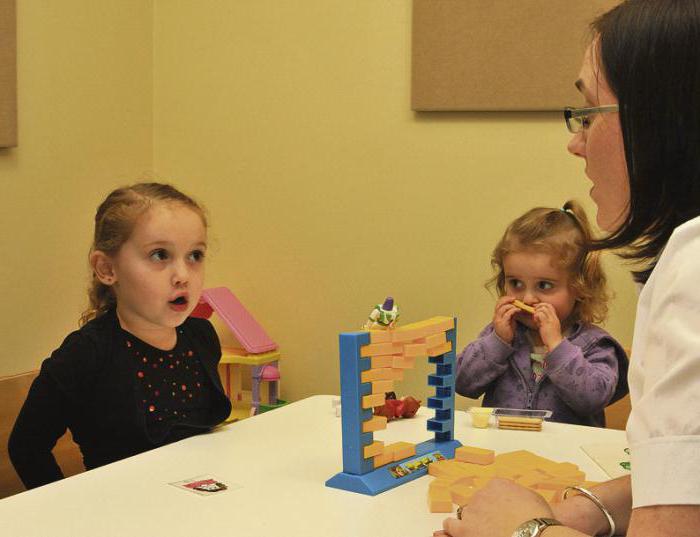
However, if desired, parents can also see all the positive and negative aspects of their child’s speech, as well as draw appropriate conclusions.
After 3 years, children are well versed in colors and clearly understand plural and singular numbers. At this age, children strive to talk as much as possible. They are silent only when they sleep.
At the age of about 4 years, the child speaks more consciously. Parents and educators need to talk with the baby as equals. Then he begins to master speech faster, and his vocabulary expands very quickly.
Three-year-old children try not to use complex sentences because they are afraid that they will not be understood. By the age of four, the child’s fear disappears and he speaks more confidently. Now he knows that his listeners understand him.
It is necessary to constantly monitor the development of speech in a 3-4 year old child. The older children get, the more difficult it is to help them establish correct pronunciation.
Methods of speech development for children 3-4 years old
At this stage, the child’s sphere of communication expands, which means his vocabulary increases. However, many letters or sounds are still difficult to remember and pronounce.
It is very important to create the conditions in which speech development occurs in a 4-5 year old child. To do this, you need to pay attention to hissing sounds, whistling, hard and soft. As a rule, it is with them that many children have problems.
It is necessary not only to pay attention to the pronunciation of letters, but also to speech hearing. To do this, try to speak in different ways: loudly, quietly, quickly or slowly. When dramatizing a fairy tale, pay attention to expressiveness, voice and appropriate intonation.
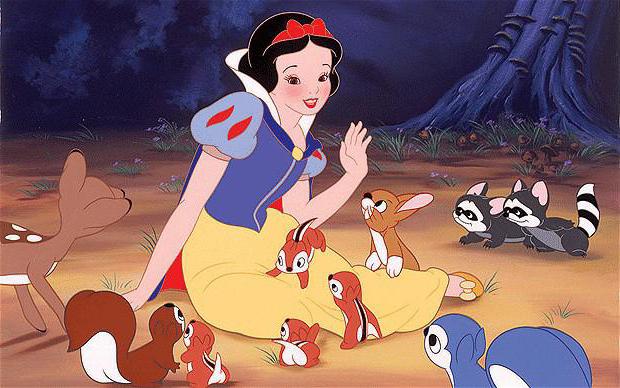
To work on developing the sound culture of speech, it is necessary to pay attention to:
- sound pronunciation;
- development of phonemic awareness;
- voice apparatus;
- speech breathing;
- moderate rate of speech;
- intonation.
In general, the speech development program for children 3-4 years old is complex. The child has difficulty pronouncing sounds. Try not to scold him, but only praise him.
When using the above methods, speech development in a 3-4 year old child becomes more active. Children begin to surprise adults with their knowledge and skills.
Norms of speech development for children aged 3-4, 4-5, 5-7 years
Norms of speech development for children aged 3 to 4 years
Speech development norms for children aged 3-4 years require the emergence of new articulatory skills. The child masters the solid phonemes “s”, “ts” and “z”. Sometimes the sound “r”, which is difficult to pronounce, is added, but its full formation occurs later. Speech therapy classes at this stage are considered by most specialists to be inappropriate, since articulation is in the process of formation. The norms of speech development for children aged 3-4 years include the ability to adequately use the names of various plants, correct use of pronouns, and the ability to say their name, age and gender. During the same period, intensive development of cases and verb tenses occurs, and increasingly, attempts to coordinate adjectives and nouns of the masculine or feminine gender are crowned with success. In addition, expanding the child’s horizons helps him understand generalization words (food, dishes, furniture), and they are immediately included in his active vocabulary. The baby also begins to consciously use diminutive suffixes, sometimes creating completely new words - “chair”, “mousy”, etc. Compliance with the norm of speech development of 4-year-old children can also be traced through the transformation of the form of phrases. Minor members of a sentence are often omitted or placed at the end, and the main essence is conveyed by the subject and predicate, the connection between which is established with the help of prepositions, endings and conjunctions. The formation of phrases can also be influenced by books or poems listened to - in this case, the child’s speech briefly acquires a specific style or rhythm. The child discovers the concept of rhyme and enjoys trying to combine even words that do not rhyme in consonant pairs. Table of norms for child speech development
The normal speech development table for children allows you to adequately assess the skills of a preschooler.
However, it must be taken into account that deviations from these standards within six months are also allowed. That is, if a five-year-old child does not clearly distinguish between the concepts of tomorrow and today, then there is nothing wrong with that. But if these words remain not fully understandable to him even at 5.5 years old, then perhaps it makes sense to consult a specialist. Child's age in months/years
Speech skills
36/3
Correct use of pronouns, occasional use of some nouns in the plural and verbs in the past tense. Correct use of at least three prepositions – for, on, under; ability to correctly name and show body parts. The active vocabulary ranges from 900 to 1000 words, and the child’s speech is 90% understandable to others. Understanding complex questions (“Are you hungry now?”) and the ability to give an adequate answer to them.
48/4
Correct use of at least 4 prepositions. Understand and reproduce the names of familiar animals and various objects in magazines or books. Correct repetition of words with four syllables, understanding the ratio of big/small, many/little. Easy fulfillment of simple requests, frequent repetition of various syllables, sounds, phrases and words.
Norms of speech development for children aged 4 to 5 years
The norms of speech development for children 4-5 years old differ significantly from the requirements for three-year-olds. The child must correctly use words of different degrees of generalization, drawing, for example, such a parallel as “chamomile - flower - plant.” In addition, the number of spatial and temporal adverbs in his active vocabulary increases - then, around, soon, etc. Word creation occupies a special place in a child’s speech development, indicating the initial stage of mastering various models of word formation. Therefore, if a child creates words by analogy, but incorrectly, for example, “painful, more painful” and “louder, louder,” then this indicates that his language development is on the right path.
The norms of speech development for 5-year-old children in the area of pronunciation of sounds allow mixed articulation of hissing and whistling sounds, as well as the absence of a clear vibrating “r”. During this period, it is recommended to read aloud to the child a lot and teach him poems, focusing on the correct pronunciation of sounds. “Growling” games are also useful, helping to form a full-fledged “r” sound. However, there is no need to force the child, since close attention to his pronunciation can cause a backlash - and the clarity of speech will be lost. Table of norms for child speech development
The normal speech development table for children allows you to adequately assess the skills of a preschooler.
However, it must be taken into account that deviations from these standards within six months are also allowed. That is, if a five-year-old child does not clearly distinguish between the concepts of tomorrow and today, then there is nothing wrong with that. But if these words remain not fully understandable to him even at 5.5 years old, then perhaps it makes sense to consult a specialist. Child's age in months/years
Speech skills
48/4
Correct use of at least 4 prepositions. Understand and reproduce the names of familiar animals and various objects in magazines or books. Correct repetition of words with four syllables, understanding the ratio of big/small, many/little. Easy fulfillment of simple requests, frequent repetition of various syllables, sounds, phrases and words.
60/5
Use of many descriptive words – adverbs and adjectives; speech is 100% understandable to adults, despite the possible presence of some articulation problems. Repeating sentences up to nine words; the ability to name household items and understand what they are needed for. Distinguishing between the concepts of today/yesterday/tomorrow; fulfilling three consecutive requests; reducing the number of grammatical errors in speech.
Norms of speech development for children 5 to 7 years old
The norms of speech development for children aged 5-6 years indicate a qualitative leap in the ability to construct coherent speech structures. A child at this age is able to retell the text, observing the necessary logical and temporal sequence. During this same period, so-called inner speech begins to form, helping the preschooler plan upcoming activities. In addition, the child can now isolate the first sound in words, taking the first step towards sound analysis.
The norms for speech development of a 7-year-old child assume a fairly high level of proficiency in coherent speech. Grammatical errors are rare, the articulation of all sounds is clear and correct. Sometimes problems arise with the coordination of words in complex sentences and participial phrases. The skill of expressive reading appears, and the ability to change the intonation and volume of the voice according to the moment is improved. Table of norms for child speech development
The normal speech development table for children allows you to adequately assess the skills of a preschooler.
However, it must be taken into account that deviations from these standards within six months are also allowed. That is, if a five-year-old child does not clearly distinguish between the concepts of tomorrow and today, then there is nothing wrong with that. But if these words remain not fully understandable to him even at 5.5 years old, then perhaps it makes sense to consult a specialist. Child's age in months/years
Speech skills
60/5
Use of many descriptive words – adverbs and adjectives; speech is 100% understandable to adults, despite the possible presence of some articulation problems. Repeating sentences up to nine words; the ability to name household items and understand what they are needed for. Distinguishing between the concepts of today/yesterday/tomorrow; fulfilling three consecutive requests; reducing the number of grammatical errors in speech.
72/6
The ability to roughly navigate time, compose a coherent story from a picture. The presence of more than 2000 words in the active vocabulary; the emergence of questions “why?”, “why?”, rapid enrichment of vocabulary.
84/7
Mastery of coherent speech, the ability to retell a text heard or read. There may be small errors when pronouncing complex sentences with participial phrases. Modulation of intonation and volume of the voice, correct articulation of all sounds. Replenishment of active vocabulary up to 3500 words, improvement of speech attention and intensive development of logical thinking.
Correct speech development
As mentioned earlier, there is no need to contact a speech therapist until the child is 5 years old. Parents can pay attention to their baby themselves and help him develop speech. When you go out, try to talk about everything that comes your way. It could be an animal, a person, a plant, etc.
Children are interested in absolutely everything. Therefore, they easily remember what was said and expand their vocabulary.
Try to ask your child about his day or the cartoon he watched. The child must learn to retell. At first it will not work out well, but thanks to daily exercises, within a month you will see a positive result.
Read poems, tongue twisters, and riddles to your children as often as possible. At the same time, do not forget to play with small details. If your child doesn't know how to tie his shoelaces, teach him.
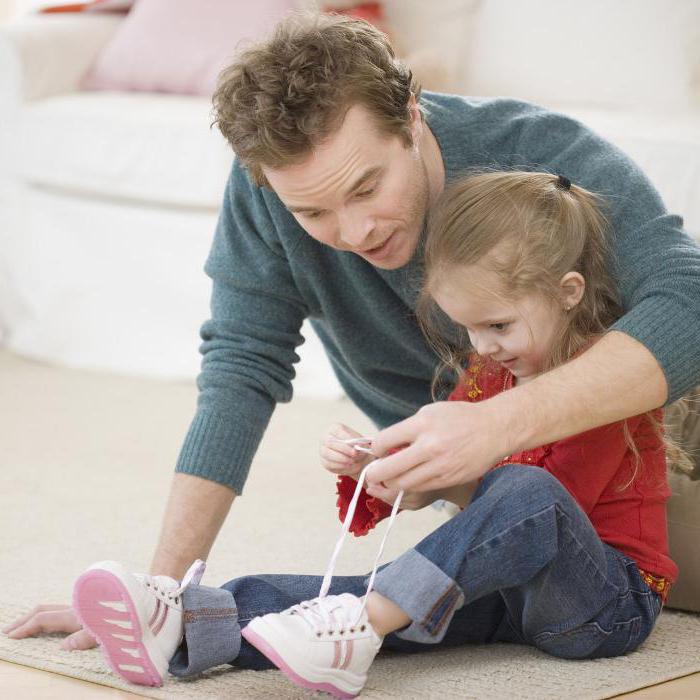
All these exercises for the development of fine motor skills will help your child begin to speak faster and correctly pronounce especially complex sounds.
Learning through play
What ensures the most effective speech development of 3-4 year old children? Games, of course. The easiest and most interesting learning is guaranteed if you and your child make an alphabet coloring book. Of course, buying it is not a problem. However, do not forget that children love to make crafts on their own.
Game "Who's Talking?" interesting to many children. The mother names the sound of the animal with the desired intonation, and the child guesses. Then you must switch roles. In this way, the baby will develop speech.
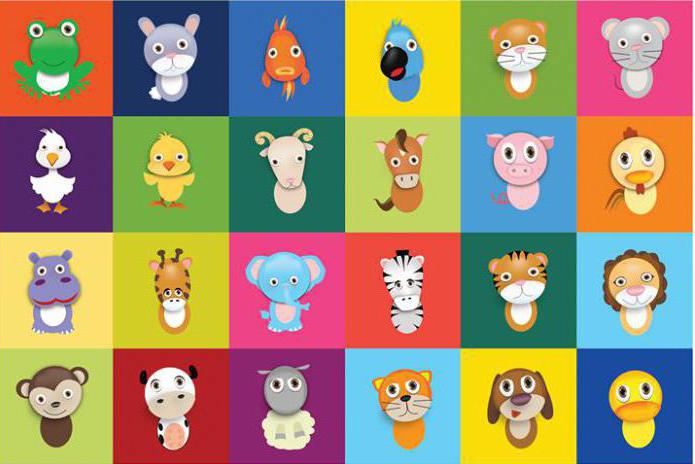
The game “Where is it” develops not only speech, but also attention in the baby. Place something on the table, under a chair, near the refrigerator, next to the sofa. Now ask questions. For example: where is the cup, where did the bear go, where is the ball? There can be many such questions. The child will also learn to navigate in space.
“Edible or not?” When you are preparing dinner and cannot pay attention to your child, ask him questions. For example, if you pick up a pan, ask: “Is this edible?” Further: “And fried meat?”, “And raw chicken?” etc.
"Difference between objects." Show your baby boots and slippers. Ask how they are similar and how they are different. It can also be the following comparisons: a fur coat with a jacket, a glass with a cup, a chair with a stool, etc.
The game “Describe the Object” will help your child develop attention and memory. Point to the bed. Let the child describe it based on your questions. What is this? What is it for? What colour? Ask your child these questions about any item or product.
The above games help the child develop correct speech and the correct pronunciation of sounds. If you communicate daily with your baby in a playful way, he will soon begin to speak correctly and clearly.
Lexical richness
But almost all of these games contribute to the development of vocabulary. Plus, of course, learning new poems, nursery rhymes, constantly reading books, encyclopedias for the little ones, active communication with the baby.
We build up vocabulary and develop the baby’s speech when:
- While walking, we talk about everything we see, explaining what it consists of, how it’s different, what it’s needed for;
- we read tongue twisters, riddles, proverbs;
- we discuss a fairy tale we read, a cartoon or film we saw;
- We teach children to compare objects and notice their differences;
- we encourage them to think about the meaning of what they read, ask questions about the plot or the characters of the characters (this comes naturally if you read books constantly);
- we find ourselves in a new place (park, attraction, institution), where we can learn new names of objects, sensations, professions;
- We play word games (“Who says that?”, “Edible or not?”, “Find the difference,” “What is where?”, etc.).
It is important to develop the speech of children in stages, paying attention to its age characteristics and the level of general development of children. Then at each next stage it will be easier for them. And for school we will prepare a child who speaks at the required level.
Why does the child not speak for a long time?
Some children are silent at two or three years old. Parents are worried and go to specialists to determine the cause. Doctors and speech therapists advise not to worry ahead of time. They claim that if a child is silent until the age of 3, this is normal. Perhaps the genes of the parents influenced.
If a child at 3.5 years old still does not want to talk, then it is necessary to seek advice from a neurologist, speech therapist, ENT specialist and pediatrician.
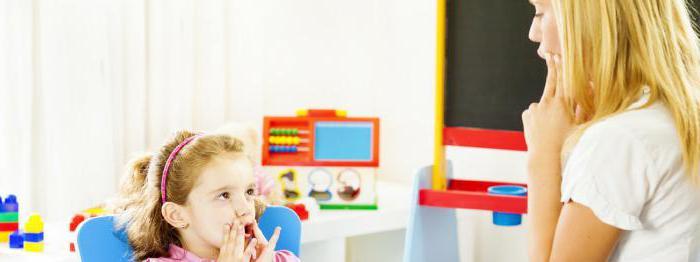
Very often, children who were silent at three years old can speak at 3 years 2 months. According to statistics, such a child begins to speak immediately in sentences.
There is an opinion that girls master speech earlier than boys. It is a myth. It all depends on the individuality of the child himself. The norms for speech development of children 3-4 years old cannot be the same. At this age, children know from 1500 to 2000 words. Each baby has his own individual supply. It all depends on the child’s personality and his mood.
Speech development after one year
The first active attempts to talk appear at the age of one year. If this does not happen, then the next “leap” will be in the 2nd year of the child’s development.
What children say from 1 to 2 years old.
• In a year and three months, the vocabulary of the crumbs is 5 words. There is an awareness of what adults demand of him. He answers to his name and follows his mother everywhere. Can recognize relatives.
• Every year and six months, 10 more words are added. The baby shows two parts of the body.
• Closer to 2 years of age, can point to almost all parts of the body. Puts together phrases (“mama give it”). Speaks 20 words.
Expert opinion
Margarita Sergeevna S.
Speech pathologist and speech pathologist with 15 years of experience working in various speech correction centers with children of different ages.
Advice: To help your baby start talking earlier, do not rush to fulfill his whims. Ask your child to say “give” if he demands something. Help him express his desires in words.
How children talk after 2 years
A child's vocabulary at two years old is at least 50 words. Tries to fulfill parents' requests. For example, when mom says to put the toys in a box, the baby does it.
At 2 years and 6 months, the child understands the meaning of questions. Points to objects around and knows what they are called. Can count to 3. Remembers the order of numbers.
At 3 years old, the baby should speak. His speech is filled with complete sentences. The age begins when the baby is interested in everything. Questions take up most of the dialogue with mom. He knows the first and last name. Can give his address.

